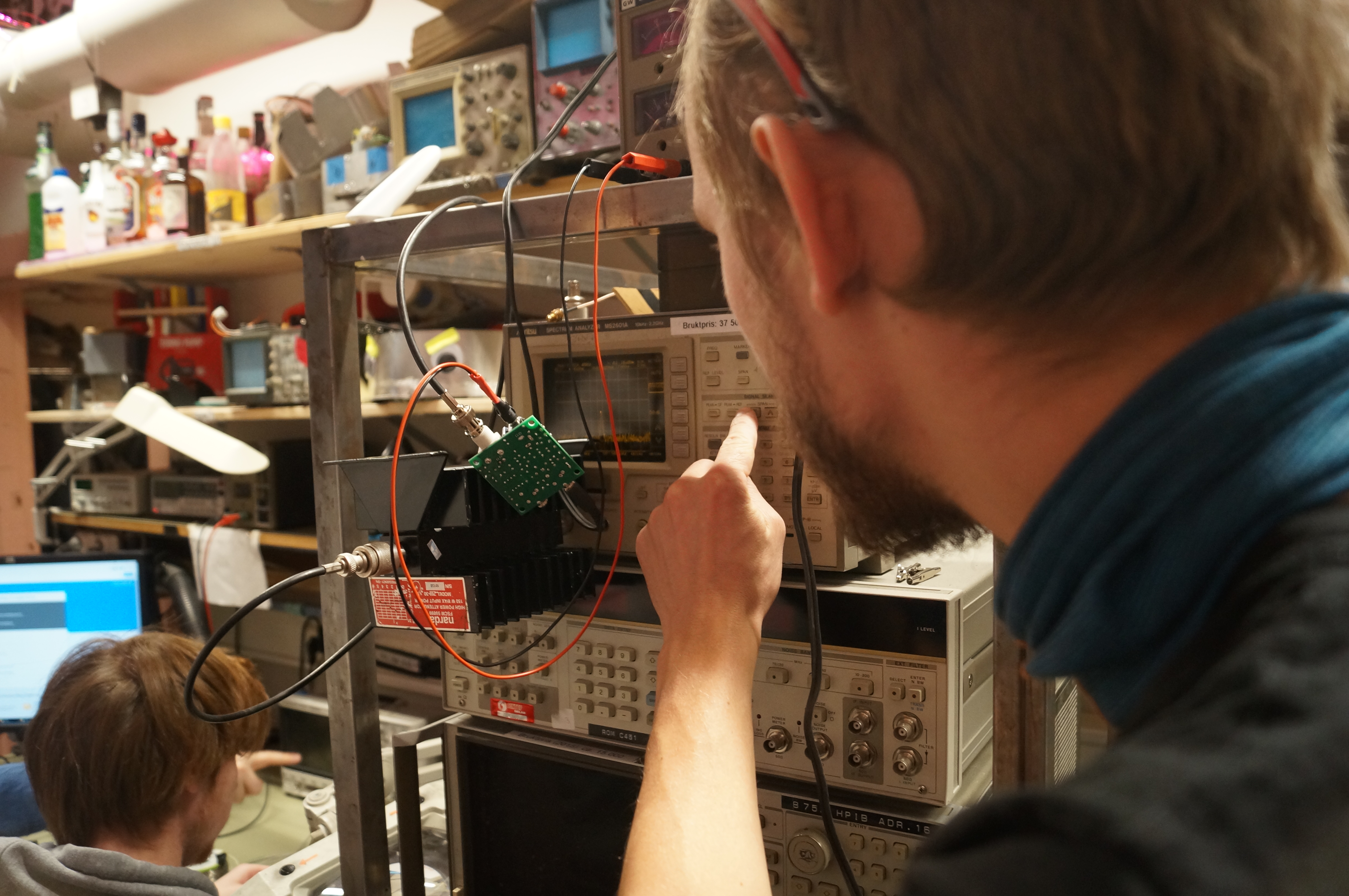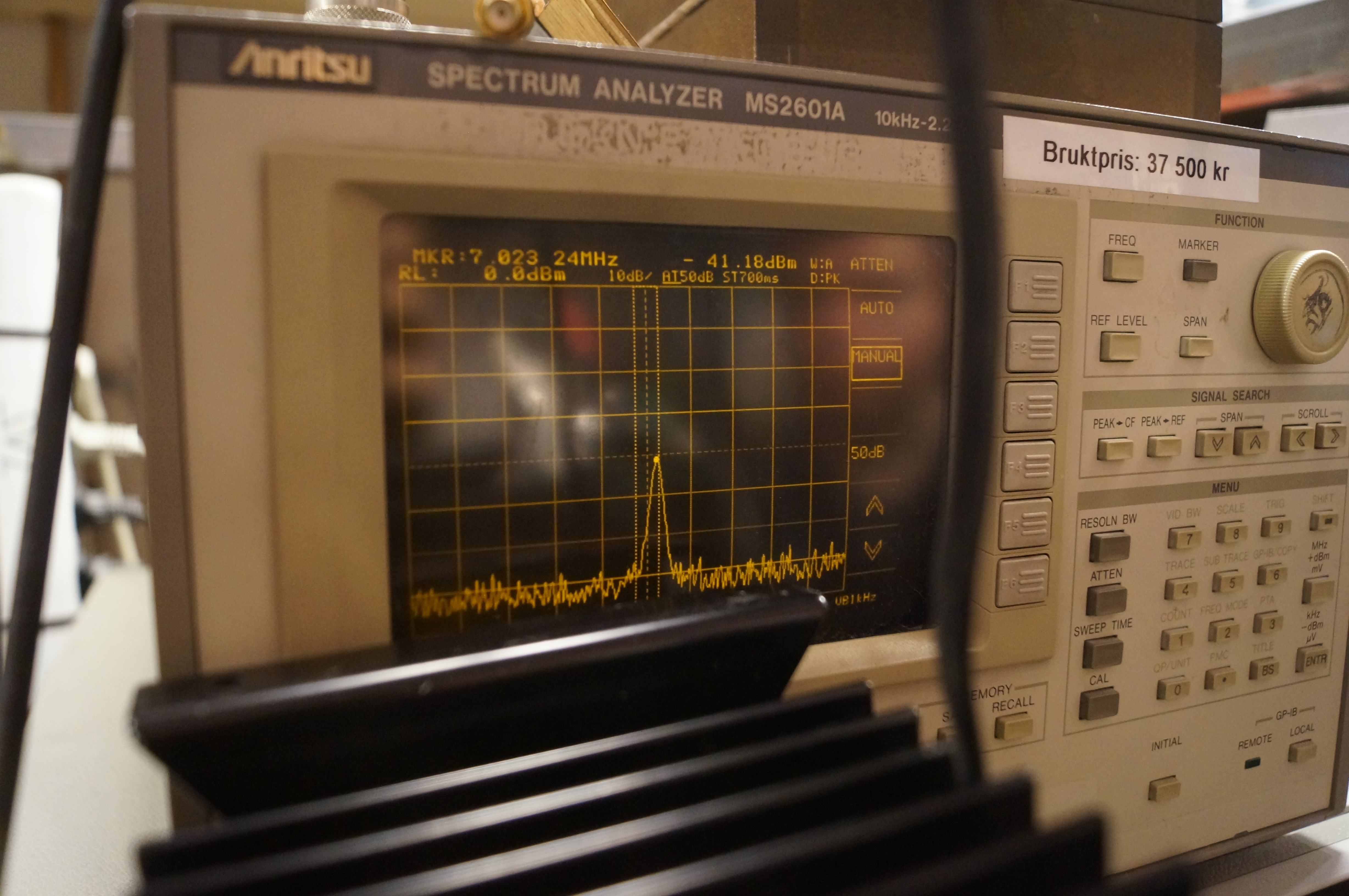From time to time we hold internal courses on technical topics in order to increase the general knowledge of our members. Recently, Henrik – LB5DH, took great initiative in organizing an introductory course in soldering for our members. Soldering is an activity that we do a lot of in ARK, for example when building beacons, antennas or doing general maintenance. It is a very useful skill to have when doing work on projects for the club.
Henrik got in touch with experienced solderers Øystein – LB7IG and Snorre – LA8ITA, who were willing take responsibility for the academic content of the course. The theory portion consisted of topics such as:
- Getting optimal heat transfer between soldering iron and PCB/components.
- How to solder components.
- What does a good solder-joint look like.
- Flux – what is it and why do you need it.
- Solder alloys and their effect on performance and usability.
- Care and maintenance of a soldering iron.
- Health and safety hazards and procedures to avoid them.

Øystein – LB7IG demonstrates how to apply solder to a through-hole component.
For the practical portion of the course, the attendees each got a Pixie CW 40 m transceiver kit. The Pixie is a very simple fixed frequency CW radio that will output around 1 watt at 7.023 MHz. As an introduction to soldering for an amateur radio club, we could not have asked for a better kit!

Partially assembled Pixie kit.
Originally, the plan was to solder a through-hole component kit (the Pixie) first, and then move on to surface mounted device (SMD) kit afterwards. This part of the course was postponed due to delivery problems with the SMD-kit.
We are very grateful for being able to loan soldering equipment and a place to use it from Omega Verksted. This came in handy, as fitting all eight attendees into our workshop at the same time would have been very crowded. In addition, we got to loan portable fume extractors from the Elprolab at NTNU through Ingulf, LB1VF. They were indispensable for the continued health of the participants. Thanks to Omega Verksted and LB1VF at the Elprolab for making the course possible!

LA6XTA removing some excess solder.

LB5QG showing off a custom case he made for the Pixie transciever.

LA2QUA brought a display and microscope unit.

Jens – LB6RH placing a throughhole component on his Pixie.

LB6RH doing a test-powerup.

Back to consulting the schematic after the test-powerup failed.

Einar – LB7JH checking out the bill of materials and placement instructions.

Testing the Pixie on a spectrum analyzer.

Local oscillator leakage is quite bad!

TX mode gives approximately 24 dBm out, note that the carrier is a little offset from the receive leakage to produce a 600-800 Hz tone. It also turns out that the output power is roughly 0.25 W (24 dBm) for this specific Pixie (-6 dBm measured on the spectrum after a 30 dB attenuator).

LB6RH and LA6XTA tuning the Pixie to see if they are able to receive each other.

LB7JH inspecting his solder joints.
Overall, the course was a great success, and got a lot of ARKs members more interested in soldering. A big thanks to LB5DH for organizing the course, LB7IG and LA8ITA for sharing what they know, and LB1SH, LA3WUA, LB1MH and LB7RG for acting as teaching assistants during the practical portion. Hopefully, we will repeat this course several times during the upcoming semesters.

0 Comments
2 Pingbacks